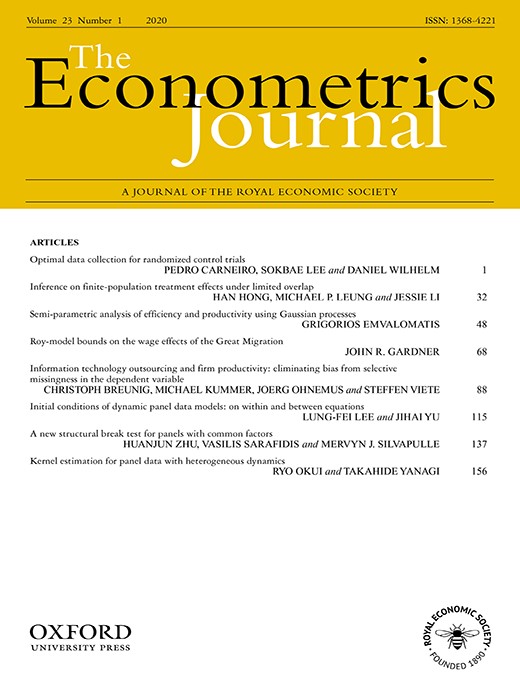-
Views
-
Cite
Cite
Huanjun Zhu, Vasilis Sarafidis, Mervyn J Silvapulle, A new structural break test for panels with common factors, The Econometrics Journal, Volume 23, Issue 1, January 2020, Pages 137–155, https://doi.org/10.1093/ectj/utz018
Close - Share Icon Share
Summary
This paper develops new tests against a structural break in panel data models with common factors when T is fixed, where T denotes the number of observations over time. For this class of models, the available tests against a structural break are valid only under the assumption that T is ‘large’. However, this may be a stringent requirement—more commonly so in datasets with annual time frequency, in which case the sample may cover a relatively long period even if T is not large. The proposed approach builds upon existing generalized method of moments methodology and develops Distance-type and Lagrange Multiplier-type tests for detecting a structural break, both when the break point is known and when it is unknown. The proposed methodology permits weak exogeneity and/or endogeneity of the regressors. In a simulation study, the method performed well, in terms of size and power, as well as in terms of successfully locating the time of the structural break. The method is illustrated by testing the so-called ‘Gibrat’s Law’, using a dataset from 4,128 financial institutions, each one observed for the period 2002–2014.





